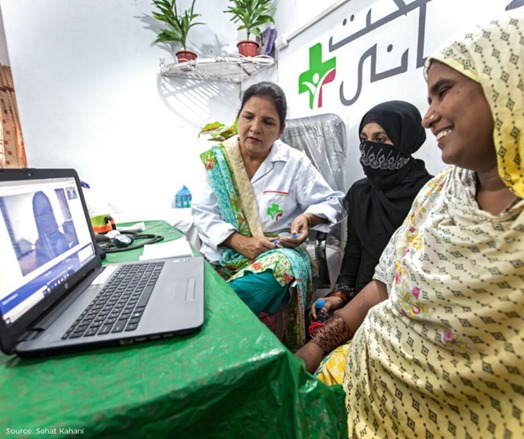Why Telemedicine Can Reshape Healthcare in Khyber Pakhtunkhwa
By: Muhammad Bilal
In a small town outside Mardan, a mother of three waits in line at the local Basic Health Unit. Her child has had a fever for three days. The doctor is absent posted, but unavailable. The nurse offers paracetamol and suggests visiting the city hospital. It’s a story that repeats itself in dozens of villages across Khyber Pakhtunkhwa every single day.

Now imagine if she didn’t have to travel. If, instead, a qualified doctor appeared on a screen in that BHU listening carefully, reviewing symptoms, prescribing the right medication all in real-time. That’s the quiet promise of telemedicine. And it’s a promise worth believing in.
When Geography Blocks Care, Technology Opens Doors
Khyber Pakhtunkhwa is home to both majestic mountains and far-flung plains. But for many families, this geography also creates healthcare deserts. In many areas, people must travel hours to reach a doctor and even then, they might not find the right one.

As someone currently working with a digital health initiative coordinating with the KP Health Department, I have had the opportunity to speak to officials, health workers, observe local clinics, and understand the logistical realities on the ground. What’s clear is that the problem is not the lack of infrastructure, but the inefficient use of what we already have.
In these settings, telemedicine is not just a tool it’s a bridge. It connects under-served communities to qualified doctors, especially female doctors, many of whom are eager to serve but restricted from working in traditional setups due to family or cultural expectations.
The Missed Potential of Our Women Doctors
Pakistan graduates thousands of women in medicine each year. However, a large portion of these talented professionals are unable to join the workforce, especially in rural or clinical environments. Many want to serve, but life doesn’t always allow a commute to a hospital in a big city.
Telemedicine gives these doctors a dignified, flexible way to contribute. Through secure digital platforms, they can conduct virtual consultations, diagnose illnesses, counsel patients, and provide care from the safety of their homes all while patients sit in their local BHUs, guided by a trained nurse.
What’s beautiful here is the two-way empowerment: women doctors get to practice, and rural patients get access to care that once felt unreachable.
A Smarter Use of Public Resources
When minor ailments like flu, skin infections, or routine antenatal checkups are referred to big city hospitals, it clogs the system. It stretches budgets, burns out staff, and delays care for more serious conditions.
But if a tiered healthcare model is adopted where primary care centers are equipped with telemedicine units, we can decongest secondary and tertiary hospitals, reduce unnecessary referrals, and allow specialists to focus on high-priority cases.
Telemedicine doesn’t require building new clinics. It requires equipping existing ones with internet, basic tech, trained nurses, and a digital window to a doctor. It’s not an expense it’s an upgrade.
A Vision Waiting to be Realized
Over the past sometime, I have been involved in coordinating discussions and groundwork with the KP Health Department to explore the implementation of telemedicine through our initiative. While formal implementation is still pending, the interest, intent, and momentum are visible.
The people I have met the officials, doctors, nurses, field officers are eager for solutions. Communities want timely, respectful care. And the system is looking for scalable answers that don’t cost a fortune.
Telemedicine checks all those boxes. It’s safe, cost-effective, and inclusive. Most of all, it brings dignity to both the patient and the provider.
The Road Ahead
Telemedicine is not a magic wand. It can’t treat trauma. It doesn’t replace the need for hands-on care in critical cases. But it can drastically improve first contact care, early diagnosis, follow-ups, mental health access, and maternal consultations especially in places where doctors don’t stay.
As we rethink healthcare delivery in Khyber Pakhtunkhwa, especially post-pandemic, we must consider how to work smarter, not just harder. Telemedicine is not a future idea it’s a present solution. The only thing it needs is vision, coordination, and commitment.
For the mother waiting in Mardan for the doctor on a career break for the nurse in a rural clinic this one digital screen could mean the world.

